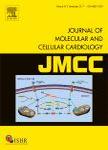版权所有:内蒙古大学图书馆 技术提供:维普资讯• 智图
内蒙古自治区呼和浩特市赛罕区大学西街235号 邮编: 010021

作者机构:Univ Virginia Dept Biomed Engn 415 Lane Rd Charlottesville VA 22903 USA
出 版 物:《JOURNAL OF MOLECULAR AND CELLULAR CARDIOLOGY》 (分子与细胞心脏病学杂志)
年 卷 期:2016年第93卷
页 面:73-83页
核心收录:
学科分类:0710[理学-生物学] 1002[医学-临床医学] 100201[医学-内科学(含:心血管病、血液病、呼吸系病、消化系病、内分泌与代谢病、肾病、风湿病、传染病)] 10[医学]
基 金:National Institutes of Health [HL05242, HL007284] National Science Foundation [1252854, 1332530] American Heart Association [14POST20460271] American Heart Association (AHA) [14POST20460271] Funding Source: American Heart Association (AHA) Div Of Chem, Bioeng, Env, & Transp Sys Directorate For Engineering Funding Source: National Science Foundation Div Of Civil, Mechanical, & Manufact Inn Directorate For Engineering Funding Source: National Science Foundation
主 题:Computational modeling Cardiac fibroblast Fibrosis Systems biology
摘 要:Altered fibroblast behavior can lead to pathologic changes in the heart such as arrhythmia, diastolic dysfunction, and systolic dysfunction. Computational models are increasingly used as a tool to identify potential mechanisms driving a phenotype or potential therapeutic targets against an unwanted phenotype. Here we review how computational models incorporating cardiac fibroblasts have clarified the role for these cells in electrical conduction and tissue remodeling in the heart. Models of fibroblast signaling networks have primarily focused on fibroblast cell lines or fibroblasts from other tissues rather than cardiac fibroblasts, specifically, but they are useful for understanding how fundamental signaling pathways control fibroblast phenotype. In the future, modeling cardiac fibroblast signaling, incorporating-omits and drug-interaction data into signaling network models, and utilizing multi-scale models will improve the ability of in silico studies to predict potential therapeutic targets against adverse cardiac fibroblast activity. (C) 2015 Elsevier Ltd. All rights reserved.